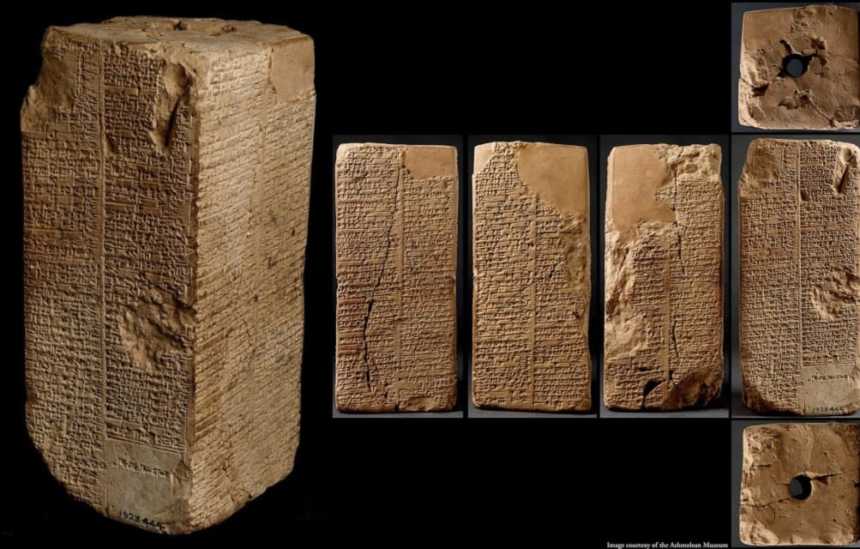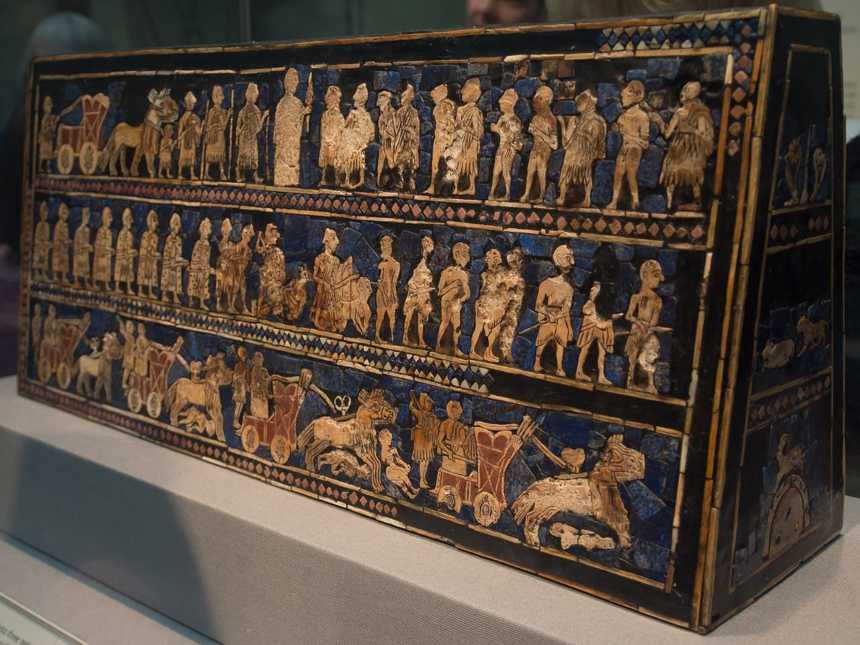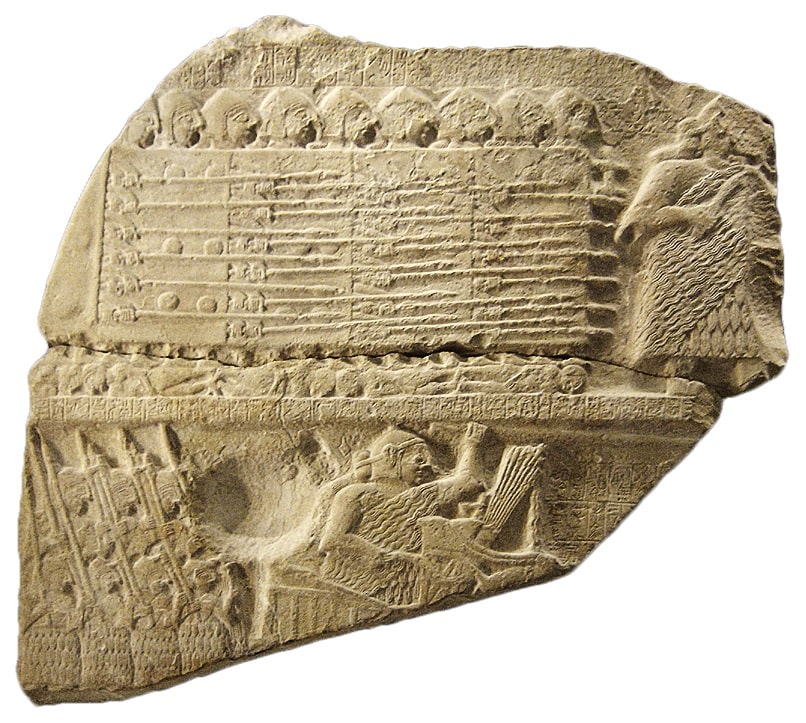The first writing system. The plow. The sailboat. The first lunar calendar. These accomplishments and more were the products of the city-states of Sumer, which arose on the flood plains of the Tigris and Euphrates Rivers in what is now modern-day Iraq. The Sumerians began to build their walled cities and make significant advances beginning around 3500 B.C.E.
Their domination of this region lasted until around 2000 B.C.E, when the Babylonians took control. Sumerian culture and technology did not disappear but were adopted by its conquerors.
Located in what the ancient Greeks called Mesopotamia, which literally means “the land between the rivers,” Sumer was a collection of city-states that occupied the southernmost portion of Mesopotamia. Most were situated along the Tigris and Euphrates Rivers, lying just north of the Persian Gulf.
The physical environment there has remained relatively the same since about 8000 B.C.E. The landscape is flat and marshy. The ground is primarily made up of sand and silt, with no rock. The climate is very dry, with only about 16.9 centimeters of rain falling per year. Natural vegetation is sparse, and no trees other than palm trees grow there. The rivers overflow their banks in the spring, sometimes violently and destructively. During this process, they deposit a rich layer of silt on the surrounding floodplain.

The Cradle of Civilization
Considering the harsh and forbidding natural environment, how did the first civilization arise in Sumer? Surprisingly, the environment was part of what made civilization possible.
The silt carried by the rivers down from the northern mountains provided rich fertilizer for growing crops when the rivers overflowed. The constant sunshine was also good for crops. But without water, they would have easily dried up and died. Through the leadership of priest-kings, Sumerians organized farmers in each city-state to build extensive irrigation systems of canals and dams. Before long, the desert was blooming with a surplus of barley, dates, and other crops.
This surplus allowed many people to pursue occupations other than farming, while still being able to meet their basic needs. These people became artisans, merchants, and craftspeople. They helped build the cities and increase the wealth of the city-states through trade with neighboring societies.
Sumerians also developed high-quality crafts, evidence of which was found in the royal tombs of Ur, excavated by Sir Leonard Woolley in the 1920s. Trade also helped the Sumerians to secure vital items such as timber from Lebanon and luxury goods such as the semiprecious stone lapis lazuli from the Indus River Valley.

Because of the surplus grain, the government could grow in size to support numerous officials and priests. It could also pay thousands of workers with barley while they were building canals, city walls, and ziggurats or while they were fighting to defend their city-state or extend its influence over the region. The barley was collected as a tax from the farmers. Farmers were also required to give some time to the government to work on projects. Slaves and hired workers also contributed.
As the government and economy grew in size and complexity, officials and merchants required a sophisticated writing system to record transactions. First came number markings and simple pictograms, the writing system began to incorporate pictures representing a physical object or idea (such as a picture of the sun to represent the sun).
As trade and government activity increased, the writing system began to incorporate more abstract pictograms and phonograms, or symbols representing sounds. These new forms provided greater flexibility and speed in writing. They were adopted by other cultures (such as the Assyrians) who did not even speak Sumerian.
Sumerian Wisdom
The Sumerians wrote on clay tablets, using a reed pen called a stylus. Once dried, these tablets became hard and, fortunately for today’s researchers, endured for millennia in the hot, dry climate.
Thousands of these tablets have been unearthed. Some libraries have even been discovered with over 10,000 of these clay tablets. And although the vast majority of these tablets contain records of goods collected and distributed by the governments and trade transactions, some contain myths, stories, and letters. These documents have provided much information about the culture and history of the Sumerian people.

With their ingenuity, the Sumerian people developed complex irrigation system and a written language. They were the first people to use the plow to lift the silt-laden soil of their crop fields and they invented the sailboat. They were the first people to design a calendar based on the phase of the moon and they developed a numerical system, based on the number 60, that is still used to measure seconds and minutes.
A culture of many firsts, the Sumerians led the way for other societies that followed them.


